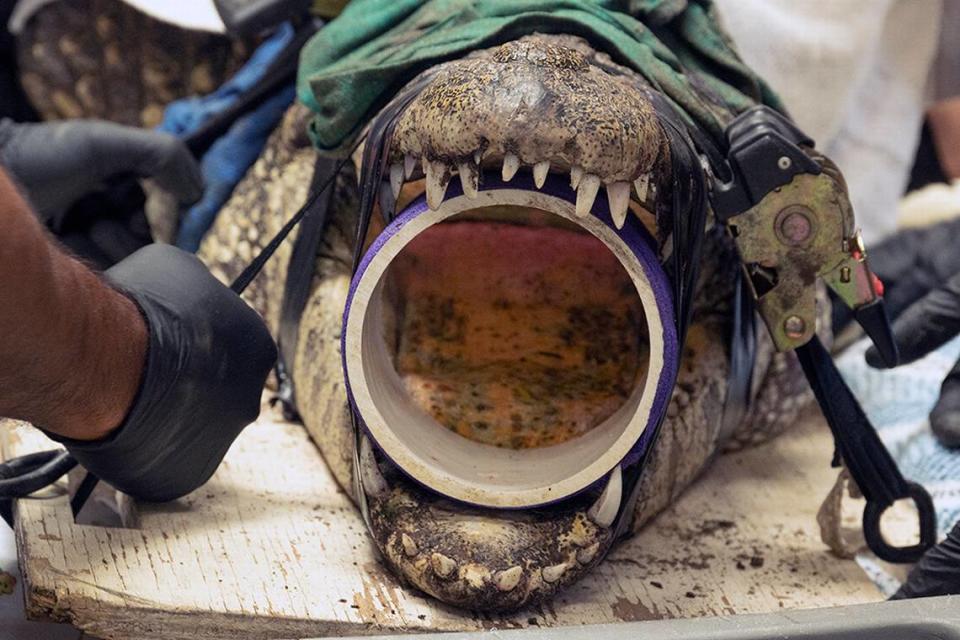Crocs at Zoo Miami swallowed something bad, and vets stuck their arms inside to find it
What happened to the plastic bottle that fell into the crocodile pit at Zoo Miami?
That’s what zookeepers wanted to know as they prepped for a procedure this week to peer into the bellies of two endangered Cuban crocodiles at the Kendall attraction.
Zoo Miami spokesman Ron Magill sent a media release and a plethora of pictures of humans doing things that would give most of us nightmares. Like sticking your arm elbow-deep into the toothsome maw of a croc. The reptiles can have more than 60 teeth and a jaw that clamps down like an industrial vise.
READ MORE: Did an alligator just eat my phone? Zoo Miami has a warning

But that’s what workers had to do Tuesday, using radiographs, to see if either Leroy or Princess had swallowed a plastic bottle. The foreign object could injure or even kill a croc after it’s swallowed.
Visitors told zoo officials that a bottle fell into the Cuban crocodiles’ habitat. Workers looked around for the plastic bottle but couldn’t find it. The group figured one of the crocs must have swallowed it. And it wouldn’t be the first time.
In 2019, Leroy underwent gastric surgery to remove a metal can and Princess had a plastic baby bottle yanked free from her innards via an endoscope.
“Over the years, everything from cellphones to sunglasses have been retrieved from the bellies of animals at the zoo, causing significant stress and in some cases, physical harm to those animals,” Magill said in the release. “Whether by accident or on purpose, when these items end up in the zoo’s habitats, they often present a real threat to the health and well-being of the animals that live there.”
It’s not simply a matter of waiting for nature to take its course.
If the bottle couldn’t pass naturally through the crocodile’s digestive system, it could cause digestive obstructions, which could lead to serious complications or death, Magill said.
So, into the bellies Zoo Miami veterinarians and staffers peered.

First, they sedated the Cuban crocodile pair and propped their mouths open. Then, using a radiograph, a device that can project an image through X-ray technology, vets saw some small unidentifiable items in the stomachs of both crocodiles.
Princess had swallowed what appeared to be a large bottle cap. An endoscope was used to look into Larry’s stomach, but nothing of significance could be seen, Magill said.
The endoscope didn’t work well with Princess after several attempts. Zoo Miami vets decided that since the foreign item inside of her was of a smaller size than a plastic bottle, they would leave it alone. They plan to closely monitor her and hope that she passes the foreign object naturally.

“We ask that when visiting the zoo, please ensure that all personal items are secure to prevent them from ending up in habitats where they can be extremely harmful to the animals,” Magill urged visitors.
On Wednesday, Magill said that Leroy and Princess were recovering well back in their habitats.
As for the remains of the bottle?
“They never did find the bottle,” Magill told the Miami Herald. “It is being assumed that it was chewed up, swallowed and then passed naturally in small pieces.”



